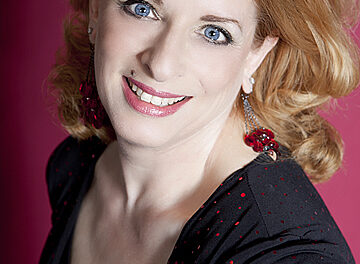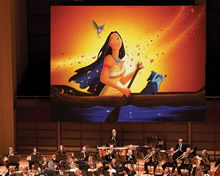There’s a growing sentiment around the country and across Europe that classical music is in trouble. CD sales have dropped, contemporary big-name composers are scarce, and according to many mopers, audiences at classical concerts are graying. Yet the superb young musicians I see every spring at Spoleto Festival USA in Charleston, SC, playing so well and brimming with enthusiasm for both old and new works, is just one of numerous youth orchestras in the US and abroad that are giving the music fresh life and fresh hope. In North Carolina alone, hundreds of rehearsal rooms are active each summer at the two fine festivals I keep tabs on – the Eastern Music Festival in Greensboro and the Summer Music Festival at the eponymous Brevard Music Center. For five overlapping weeks, faculty and students at both campuses present an impressive treasury of old and new music – for audiences that aren’t seas of gray. The festival in Brevard, NC, also features opera, offering as many opera productions this summer as any professional company in the state will be mounting during the entire year. Brevard’s season starts two weekends earlier than its Greensboro counterpart, so it was the sixth weekend of the current festival that was capped by the “Beethoven, Bartók, and Bronfman” concert, with Yefim Bronfman playing Bartók’s Piano Concerto No. 3 as Christoph König led the BMC Orchestra.
With opera productions by BMC’s Janiec Opera Company now presented indoors at the Porter Center, renovations have begun at Whittington-Pfohl Auditorium, where orchestral concerts are presented in the greatly sheltered outdoors. The first step of the two-step makeover is already auspicious, sweeping away the moat between the audience and the stage where the orchestra pit used to be. Perhaps the lip of the W-P stage is as much as 20 feet closer to the audience. Acoustically, the advantages of the new setup are most dramatic when you compare the sound of the brass and percussion – at the rear of the orchestra – to previous years. Although the lower sounds of the timpani are still puffier than I’d like, cymbals and tambourines have a new crispness, and the brass are a revelation, their true merit manifested for the first time. Next year, the entire stage will be encased in a new acoustic shell, cutting off the escape of sound to the rear of the stage and introducing a stepped, sloped ceiling.
From my vantage point in Row L, the interim phase of the renovation wasn’t altogether kind to Bronfman on Friday evening when he took his place center stage. The sound of the Steinway would be more pleasingly pearlescent when I sat in Row F on Sunday afternoon for performances by BMC’s concerto competition winners. So the most consistently satisfying aspect of the Friday evening concert was König’s festival debut, reinforced by the more favorable placement of the BMC Orchestra. They warmed us up for the heavyweights to come with Otto Nicolai’s Overture to The Merry Wives of Windsor, where a more transparent sheen to the violins was immediately evident, followed by a purer sound to the clarinet after the cellos launched the melody. An unfortunate faltering from the winds marred the transitional passages where the crescendo and accelerando prod the music to a merrier thrust, but the strings were exemplary. Collective attack on the galloping climax of the piece was thrilling once the winds regrouped. Here was where I first discerned the difference between the tubby sound of the timpani and the sparkle in the cymbals. The improved presence of the brass also helped as the conclusion sustained its fire.
Notwithstanding the somewhat constricted sound of the piano, Bronfman was wonderfully expressive in the E Major concerto’s opening Allegretto. My only problems with the orchestra came when König whipped them up to full volume: Bronfman struggled to be heard at the keyboard even at fortissimo. When we reached the middle movement, barriers to appreciating Bronfman’s artistry melted away, and the voice within his soft chords began to sing. The pastoral sound of the strings affirmed a kinship with Copland in Bartók’s only made-in-America concerto, with the winds producing a nicely woodsy answer to the acceleration from the piano, and the brass adding a more citified flavor. Recordings I have – by Argerich, Koscis, and Grimaud – don’t quite unlock the full beauty of this Adagio religioso, especially the wistful gravity Bronfman was able to produce in live performance. König and the ensemble were more successful in staying out of Bronfman’s way in the concluding Allegro vivace than they had been in the opening movement, so all the playfulness and jollity came through. While the tutti threatened to drown out the guest soloist as the concerto climaxed, only a couple of split seconds were compromised in the final rush.
At this point, the youthfulness of the audience came out in the loud, long, and enthusiastic ovation for Bronfman, König, and the 81 musicians who had accompanied so lustily. For an encore, Bronfman played the closing Precipitato movement of Prokofiev’s Sonata No. 7, the same encore that Natasha Paremski had chosen less than three months ago after playing with the Charlotte Symphony. Though he didn’t match Paremski for speed and sheer pounding thunder, Bronfman was more adept at revealing the inner textures of this showpiece and sketching its overall architecture. If the two performances were comparable, the ovations for them definitely were not, Brevard’s youth-infused crowd decisively trouncing Charlotte’s subscribers.
Of course, the improved acoustics played a crucial role, but I thought that the BMC Orchestra’s performance of Beethoven’s Symphony No. 3, led by König, was the best symphonic performance I’ve ever heard up in Brevard. Compared with the moribund account that the Charlotte Symphony gave “Eroica” at the start of the 2014-15 season, this performance had snap and kinetic energy from the very beginning of the Allegro con brio. But König’s brilliance imbued more than the lively tempos. The cellos had a nice foreboding thrust in the placid section of the movement, and in the quietest episode, before the trombone triggered the last crescendo, there was a special expectancy as we approached the brink. Plunging into the Marcia funebre second movement, König refused to let the tension or the drama dissipate. Principal players in the woodwind section worked together beautifully in the quiet section, setting the stage for a grand entrance by the brass in the climactic moments. At the start of the penultimate Scherzo, there was a busy percolation from the winds and the strings that reprised the tensile strength of the opening movement, with a suddenness in the crescendos that Haydn would have loved. The French horns earned their subsequent bows right here, connecting the quiet episodes to the jubilant romps.
The exuberance of this orchestra was perhaps most audible in the Allegro molto finale, with pizzicatos after the roaring start that were nothing like the stealthy cats’ feet you barely hear on so many recordings. König obviously wasn’t worried about squandering the dramatic contrasts that lay ahead, and he didn’t. Quiet passages had a restless ambiguity with a ready-to-burst eagerness pulsing inside, making the lone clarinet sound more relaxed before the circling figures that signaled the grandest build of this mercurial movement. The brass weren’t quite as together as they had been earlier, but they were still majestic, and the beautifully crafted ending left me wanting more. Another robust ovation from the audience, including loud screams from the students in the crowd, confirmed that they were also hungry for a König encore. Judging by the rapport he has established with the BMC Orchestra, I’d assume that faculty and festival officials have a similar feeling about inviting König back for years to come.













